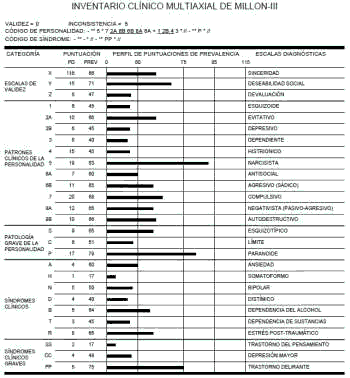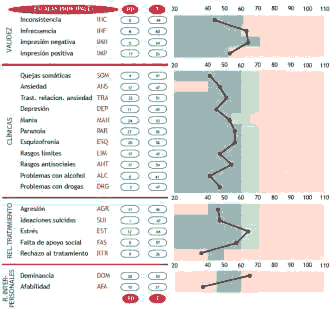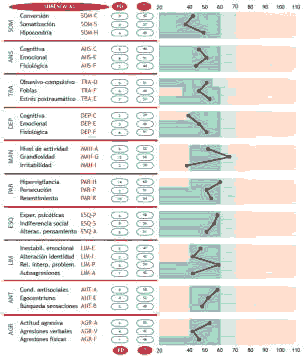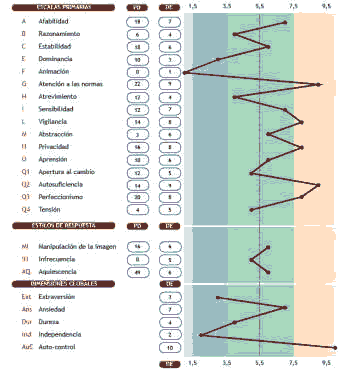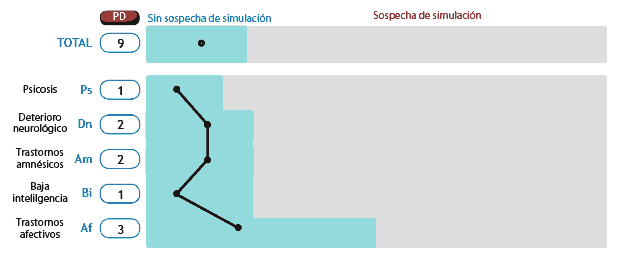Abstract
One of the illegal-criminological phenomena that have had the greatest impact on society is the perpetration of sexual abuse and/or assault in the ecclesiastical sphere. The media and public’s knowledge of this type of criminal act causes an important social repercussion of collective repulsion Tiffon, et al. In sexual terms and within the clerical and religious sphere, the priest does not repress or is prohibited from his sexuality; rather, he sublimates it by understanding that he must have sufficient capacity and self-control to sacrifice his sexuality to channel it to a higher good. In fact, there are very sexually promiscuous people who are unbalanced and celibate people who are balanced Echeburúa
Keywords
Sexual Assault, Sexual Abuse, Clerical Teaching, Paraphilia
Introduction
One of the illegal-criminological phenomena that have had the greatest impact on society is the perpetration of sexual abuse and/or assault in the ecclesiastical sphere. The media and public’s knowledge of this type of criminal act causes an important social repercussion of collective repulsion [1].
In sexual terms and within the clerical and religious sphere, the priest does not repress or is prohibited from his sexuality; rather, he sublimates it by understanding that he must have sufficient capacity and self-control to sacrifice his sexuality to channel it to a higher good. In fact, there are very sexually promiscuous people who are unbalanced and celibate people who are balanced, Echeburúa, et al.
And while sex offenders within the clergy are a minority, they cause particularly harmful emotional damage to their victims.
The risk of paedophile behaviour derives from:
•An unsatisfactory sex
•A continuous and permanent interpersonal contact with minors and young adolescents, a population towards which potential aggressors have a higher level of accessibility and which has a lower capacity for physical and psycho-emotional autonomy of resistance with a greater risk of vulnerability and psychological
•These cases are those that are perpetrated within religious schools, boarding schools or sacristies in which there is the presence of altar boys. At the same time, potential victims may present emotional deficiencies due to weak family ties, coming from unstructured families, mistreatment within the family, etc.
•An asymmetric age relationship in which the minor places their trust in the clerical establishment derived from its social prestige; this makes it easier for the undertaking of criminal conduct of a sexual nature to be accompanied by the discrediting of the minor by unbelieving
The last point described involves great difficulty and an added challenge for the mental health professional-psychologist or psychiatrist- who is entrusted with an evaluation of the credibility of the testimony, a very frequent request in courtrooms when it comes to this criminal typology of sexual abuse and/or assault on minors. In these cases, "the word" or, at least, what is allegedly experienced (or undergone) by the minor, is contradictory to what was declared by the alleged aggressor, so that in a confronted trial, it must be demonstrated what really happened, this being the object of the legal procedure, excluding, if it is the case, situations of alleged false complaints [2,3].
On many occasions, the psychometric psychological tests undertaken on the alleged aggressor or the alleged victim attain such relevance as to be considered by the different legal practitioners, who rely on these evaluations for the drafting of their sentences or in their strategies of defence/prosecution.
Likewise, it must be considered that the psychological test must always be collated through the interview of the subject (Tiffon, et al) who usually presents feelings of being "innocent" or normalizes the facts perpetrated by his person as if it were self-justification or self-deception (as a distorted and psychological defence mechanism) in order to avoid the discomfort of the mental and intrapsychic conflict that the knowledge of the criminal scope of their own acts arouses (Tiffon, et al).
And, at the precautionary level, it is necessary to avoid those paedophiles continue in contact with young people (Plante, et al).
For Terry et al, the ability to have access to children is key to the perpetration of this type of crime.
The fact is that a person of trust who is in a situation of power causes minors to hesitate to expose said illicit conduct.
So there is a fear that the victims will not be believed or that they will hurt their parents by the revelation of being subjected to said sexual behaviours and as such an impediment in reporting the abuse. The parents trusted the clergy and did not recognize the signs. Amrom et al, data was analysed from a sample of clergy members, who comprised four comparison groups: Clergy members referred to treatment for (a) child sexual abuse, (b) sexual misconduct with adults, (c) general clinical problems, or (d) routine employment evaluations without previously identified clinical or sexual issues. While differences were found between groups, only the Aggressive/Sadistic scale of the MCMI-III consistently distinguished clerics who sexually abused children from all other clergy members.
For these authors, the findings are debated with regard to the utility of the MMPI-2 and MCMI- III as a screening tool for administrative applicants for the Catholic Church [4,5].
The Case
This is a case a 57-year-old man who worked for several years as a teacher of primary and secondary education in the private sector. Assigned to a religious order, he was expelled as a result of the court case brought against him for alleged abuse and sexual assaults on multiple child and adolescent minors in his educational activities for around 20-25 years (Tiffon, et al). During the clinical interviews, the subject referred to a history of having been subjected to sexual abuse and assault in his childhood by other people belonging to the same religious order [6].
Due to what was experienced and learned in his childhood, the subject ended up reproducing deviant sexual behaviours in the later stages of his life, with minors and young people of the educational centre where he engaged in his professional activity as a teacher [7,8]. In this way, based on what was stated by the subject himself, and from the point of view of sexual behaviour, he presented the following deviations.
Paedophilia
Attraction to minors. Sexual excitement or pleasure that is obtained, mainly, through sexual activities or fantasies with children, generally between 6 and 11 years old.
Sadism (sexual)
Experiencing erotic pleasure by causing physical pain or humiliation, in this case, on minors.
Hyper sexuality
Psychological disorder exclusively characterized by a very active libido and an obsession with sex.
Ephebophilia
Sexual attraction of a mature person towards a male adolescent between 13 and 18 years old (other authors suggest between 15 and 19 years old). Ephebophilia can be a simple sexual desire for someone who looks like a teenager or young man, which can be within the age of sexual consent.
Results
To objectify his psychological status, the following objective personality and psychopathology tests were undertaken: MCMI-III by Millon, PAI by Morey, 16PF by Cattel (Refer Figure 1, Figure 2a).
Most of the validity, sincerity and social desirability scales of the undertaken tests are within statistical normality and do not present or have any important significance. As such, it follows that the interpretation of the clinical scales of the different assessment instruments used, can fit or be compatible with the genuine basic personality traits of the subject (Refer Figure 2b, Figure 3, Figure 4).
In this way and with regard to the MCMI-III, what stands out is the basic personality traits of the narcissistic-paranoid type (scores of 83 and 79, respectively), as well as a tendency to delusional disorder (score of 75).
It should be noted that the subject does not present a tendency towards psycho-emotional dependence, being notable his tendency towards
the capacity for personal autonomy (“Dependency” Scale with a score of 40). From the MCMI-III, and due to the low significance of the scores of the rest of the clinical scales, the absence of psychic alteration or dysfunction can be deduced, which suggests that the subject has reasoning and analytical capacity (capacity for emotional self-control) [9-12].
In relation to the PAI, most of the scores obtained are within strict statistical normality. In any case, they present an elevation in the “Stress” scale, which would come to be contextualized within the media impact derived from the alleged illicit conduct perpetrated and in the juridical-legal framework in which it was situated.
The personality traits that the 16PF explains, would define the degree of psycho-emotional instability ("Neuroticism" with a score of 7.67/10) that remains hidden and/or latent, without being able to achieve
Discussion
From the idiographic point of view (individual with respect to the subject), the results obtained in the objective psychometric tests illustrate the absence of any pathology in the psychic status of the evaluated subject. In relation to the acts of continued sexual abuse and assault with multiple minors over many years of criminal undertakings, cognitive and/or volitional capacities as elements of modifying circumstances of criminal responsibility, remain undamaged [13].
The set of paraphilia behaviours perpetrated continuously over several years are described such as paedophilia (for whose sexual excitement or pleasure is obtained, mainly, through sexual activities or fantasies with students, generally between 6 and 11 years old
); sadistic-sexual behaviour (for which he experienced erotic pleasure by causing physical pain or humiliation to his students); hyper sexuality in which he was characterized by a very active libido and an obsession with sex and ephebophilic behaviour (whereby, as an adult, he was sexually attracted to male adolescents between the ages of 13 and 18).
It should be noted that the victims were minors, students of the teacher; being therefore more vulnerable and fragile to the dominance and undue influence of the teacher over them, facilitating the fulfilment of his own sexual desires [14].
symptomatological expression in an evident way given the rest of the scores concerning said state, which remain within strict statistical normality. Likewise, the 16PF shows the existence of a level of self-control of their own emotions: See Scale “Sober” with a score of “Conscious” with a score of 8/10, “Self- sufficient” with a score of 10/10 and “Controlled” with a score of 10/10. Considering the above in relation to the tendency to simulate responses, it is clear from the SIMS that there was no intention of this, which is why it suggests that their responses are consistent and not simulated, conferring reliability.
The tests administered did not reveal any objective cause that could indicate the existence of a mental disorder or psychopathological Alteration that achieves a range of severity to nullify them. Therefore, he presented knowledge and motivation at the time the events were perpetrated, which means that he was fully attributable to the events and, therefore, in the Spanish judicial system, legally responsible.
From a nomothetic (general) point of view, the present study suggests that there is no concrete and specific psychological profile of the sexual aggressor and/or abuser of minors (Tiffon, et al.)
The casuistry pertaining to this type of crime must be dealt with individually for each case. This is justified by the perpetrator's own sexual behaviour: Sexual deviations and paraphilia’s are multiple and diversified, which is why it is necessary to act in a concrete and detailed manner in each expert evaluation. Likewise, and following on from the nomothetic point of view, the present study also reveals the influence that the socio-environmental factor of the effects of learning has on a minor who, later in adulthood, mechanically reproduces these aggressions on other minors, without possibly being aware of the illegal and/or unlawful act that this entails. In this sense, it is always necessary to collect information about the content of thoughts and the cognitive distortions that the aggressor presents [15,16].
Conclusion
Set of paraphilia behaviours perpetrated continuously over several years described, such as paedophilia, sexual excitement or pleasure was obtained, mainly, through sexual activities or fantasies with students, generally between 6 and 11 years old; sadistic-sexual behaviour which he experienced erotic pleasure by causing physical pain or humiliation to his students; hyper sexuality in which he was characterized by having very active libido and an obsession with sex, and ephebophilic behaviour (whereby, as an adult, he was sexually attracted to male adolescents between the ages of 13 and 18). It should be noted that the victims were minors, students of the teacher; being therefore more fragile and vulnerable to the dominance and undue influence of the teacher over them, facilitating the fulfilment of his own sexual desires.
References
- Amrom A, Calkins C, Fargo J. Between the pew and the pulpit: Can personality measures help identify sexually abusive clergy? Sexual abuse. 2019; 31: 686-706.
- Cattell RB, Cattell AK, Cattell HEP. 16 PF-5. Personality factor questionnaire. Madrid 1995.
- Echeburúa E. “Sexual abuse in the clergy: A look at the abuser". Eguzkilore: Notebook of the basque institute of criminology. 2015; (29): 109-114.
- González FJ. “Manual of attention and expert assessment in sexual violence. Good practice guide.” 2018.
- Millon T, Davis R, Millon C. “Millon- III Multiaxial Clinical Inventory.” Madrid. Pearson Education. 2011.
- Morey LC. “Personality Assessment Inventory.” Psychological Assessment Resources, Florida, USA. 2007.
- Plante TG, McChesney KL. Sexual abuse in the Catholic Church: A decadeof crisis (2002-012). eBooks. 2011;pp: 228.
- Terry K, Smith ML, Schutt K, Vollman B, Massey C. The causes and context of sexual abuse of minors by catholic priests in the United States, 1950-2010. A report presented to the United States conference of catholic bishops by the john jay college research team. United States conference of catholic bishops, Washington, DC. 2011; pp: 1-130.
- Tiffon BN. Written presentation: "The credibility of the testimony in minors." Training event: “Meeting of directors of the IML and CF. Attention to child victims in the institutes of forensic sciences”. 2018.
- Tiffon BN. Study of the credibility of the testimony in minors who are victims of sexual abuse and/or assault. Manual of attention and expert assessment in sexual violence. Good Practice Guide. 2018; pp: 494.
- Tiffon BN. “Practical Criminológica Atlas of Forensic Psychometry: Murders. J.M. Bosch Editor. Barcelona. 2019; pp: 454.
- Tiffon BN. “Practical-Criminological Atlas of Forensic Psychometry: Attempted Murders.” J.M. Bosch Editor. Barcelona. 2019; pp: 253.
- Tiffon BN. “Practical-Criminological Atlas of Forensic Psychometry: Attempted Murders.” J.M. Bosch Editor. Barcelona. 2020; pp:168.
- Tiffon BN. Practical-Criminological Atlas of Forensic Psychometry: Attempted Murders.” J.M. Bosch Editor. Barcelona. 2020; pp: 150.
- Tiffon BN. “Abuses and/or sexual assaults in the clerical establishment. “Practical-Criminological Atlas of Forensic Psychometry: Paraphilias and Sexual Assaults of Minors. "JM. Bosch Editor. Barcelona. 2020.\
- Widows MR, Smith GP. “SIMS. Structured Inventory of Malingered Symptomatology.” Psychological Assessment Resources, Florida, USA. 2005; pp: 1-9.





